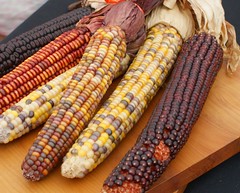US AP History Period 1 Flashcards
Terms : Hide Images [1]
| 8447560712 | How did early Americans reach North and South America? | They crossed a land bridge from Asia |  | 0 |
| 8447560713 | What were the Indians doing when they crossed the land bridge? | Following food or herds |  | 1 |
| 8447560714 | What did the cultivation of maize do? | Transform nomadic hunter-gather societies into settled farming communities |  | 2 |
| 8447560715 | What were the Spanish 3 motives for exploration? | 1. God 2. Gold 3. Glory |  | 3 |
| 8447560716 | Where did Columbus land? | Hispainola |  | 4 |
| 8447560717 | Who came to the New World once it was discovered? | Spanish conquistadors |  | 5 |
| 8447560718 | What are the 2 things the Spanish give the Indians in exchange for their work (in the Encomienda System) | 1. Provide food, shelter, and good treatment to the Indians 2. Convert them to Christians |  | 6 |
| 8447560719 | What was the Encomienda System basically? | Slavery |  | 7 |
| 8447560720 | Who worked for Indian's rights? | Bartolome de las Casas |  | 8 |
| 8447560721 | What happened when the Spanish ran out of Indians to do work? | They went and got Africans |  | 9 |
| 8447560722 | What is the Biological (Columbian) Exchange? | Exchange of plants, animals, and diseases between Old World and New World after the time of Columbus. |  | 10 |
| 8447560723 | What 3 crops from the Americas ended up being staple crops in Europe? | Corn, Beans and Squash |  | 11 |
| 8447560724 | What diseases were from the Old World and went to the New World? | Smallpox, malaria, yellow fever, influenza |  | 12 |
| 8447560725 | Columbian Exchange | An exchange of goods, ideas and skills from the Old World (Europe, Asia and Africa) to the New World (North and South America) and vice versa. |  | 13 |
| 8447560726 | Encomienda | A grant of land made by Spain to a settler in the Americas, including the right to use Native Americans as laborers on it |  | 14 |
| 8447560727 | Atlantic slave trade | Lasted from 16th century until the 19th century. Trade of African peoples from Western Africa to the Americas. 98% of Africans were sent to the Caribbean, South and Central America. | 15 | |
| 8447560728 | Bartolome de las Casas | First bishop of Chiapas, in southern Mexico. He devoted most of his life to protecting Amerindian peoples from exploitation. His major achievement was the New Laws of 1542, which limited the ability of Spanish settlers to compel Amerindians to labor; however his suggestion to replace Natives with Africans was won he would regret. |  | 16 |
| 8447560729 | Maize | An early form of corn grown by Native Americans |  | 17 |
| 8447560730 | Anasazi | A Native American who lived in what is now southern Colorado and Utah and northern Arizona and New Mexico and who built cliff dwellings |  | 18 |
| 8447560731 | Iroquois | A later native group to the eastern woodlands. They blended agriculture and hunting living in common villages constructed from the trees and bark of the forests |  | 19 |
| 8447560732 | Cherokee | Are a Native American people historically settled in the Southeastern United States (principally Georgia, the Carolinas and Eastern Tennessee). Linguistically, they are part of the Iroquoian-language family. In the 19th century, historians and ethnographers recorded their oral tradition that told of the tribe having migrated south in ancient times from the Great Lakes region, where other Iroquoian-speaking peoples were located. |  | 20 |
| 8447560733 | Nomad | Early, simplistic man that migrated across the land bridge. | 21 | |
| 8447560734 | Causes for European interest in exploration? | The Holy Crusades, Renaissance and The Protestant Reformation. |  | 22 |
